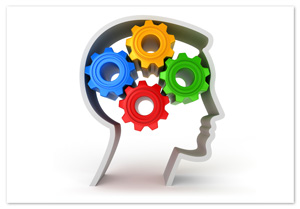Radiant Thinking

So why do Mind Maps work? Can't I just stick to my lists and my conventional tried and tested techniques?
In a Mind Map, information is structured in a way that mirrors exactly how the brain functions - in a radiant rather than linear manner. A Mind Map literally 'maps' out your thoughts, using associations, connections and triggers to stimulate further ideas. They extract your ideas from your head into something visible and structured. iMindMap retains this ideas-generating radial process with unique organic branch drawing.
Research shows that the brain likes to work on the basis of association and it will connect every idea, memory or piece of information to tens, hundreds and even thousands of other ideas and concepts.i
While it may sound like a new idea or concept, the origin of mind mapping goes back centuries in time. Mind maps are a graphical method of description to facilitate thinking and memory.

It has been seen as long ago as the 3rd century, when Porphyry of Tyros graphically visualized concepts put forth by Aristotle. Over the ensuing centuries, many philosophers and thinkers freely used graphic recording of thoughts, concepts and knowledge for purposes of analysis, study and memorization. By the mid 1900's, the theory behind mind mapping was greatly refined and being taught in schools and in the business arena. One noted British psychologist, Tony Buzan, was credited with bringing the ideas of mind maps into the business realm to enhance creative thinking, during the 1960s.
Using such pictorial representations to record knowledge has been useful over the centuries in many creative areas, especially for learning and brainstorming. The graphic representations assist memory capability through the use of right brain visual thinking and wide open problem solving. Educators, psychologists, engineers, writers, business managers and others have enjoyed the freedom and range of thought that mind maps allow.

Why Mind Maps?
Mind maps are a graphic description and visual layout of ideas, thoughts, and words that are all related to one central keyword. Providing a base for creative problem solving and brainstorming that is useful to individuals and groups. The freedom and creativity of mind mapping over other methods of dissecting thoughts or ideas allows for faster problem solving and a wider range of creative thoughts. The combination of words plus visuals like lines, colors, symbols and putting everything down graphically aids creative right-brain thinking and memorability.
Uses of Mind Maps
Notes. Whenever information is being taken in, mind maps help organize it into a form that is easily assimilated by the brain and easily remembered. They can be used for noting anything -- books, lectures, meetings, interviews, phone conversations.
Recall. Whenever information is being retrieved from memory, mind maps allow ideas to be quickly noted as they occur, in an organized manner. There's no need to form sentences and write them out in full. They serve as quick and efficient means of review and so keep recall at a high level.
Creativity. Whenever you want to encourage creativity, mind maps liberate the mind from linear thinking, allowing new ideas to flow more rapidly. Think of every item in a mind map as the center of another mind map.
Problem solving. Whenever you are confronted by a problem -- professional or personal -- mind maps help you see all the issues and how they relate to each other. They also help others quickly get an overview of how you see different aspects of the situation, and their relative importance.

Planning. Whenever you are planning something, mind maps help you get all the relevant information down in one place and organize it easily. They can be used for planning any piece of writing from a letter to a screenplay to a book (I use a master map for the whole book, and a detailed sub-map for each chapter), or for planning a meeting, a day or a vacation.
Presentations. Whenever I speak I prepare a mind map for myself of the topic and its flow. This not only helps me organize the ideas coherently; the visual nature of the map means that I can read the whole thing in my head as I talk, without ever having to look at a sheet of paper.
No comments:
Post a Comment